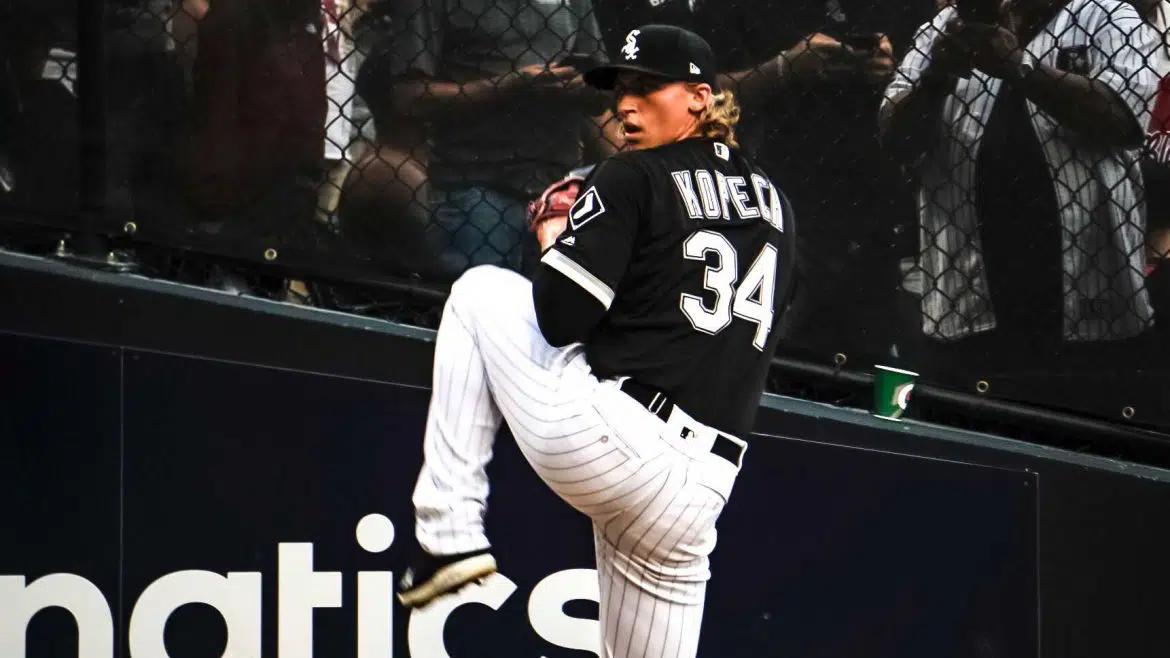A lot of talk was made over the rebuild years about the White Sox needing to attain a “stockpile” of young talent to build upon. Well, Rick Hahn went out and did just that, especially with regards to pitchers. At one point in mid-2018, White Sox fans had reason to be excited about all of these young arms: Carson Fulmer, Lucas Giolito, Reynaldo Lopez, Dane Dunning, Dylan Cease, Alec Hansen, and Michael Kopech. At that time, each one of these players either was having a solid 2018 or had a commendable 2017 campaign.
Well, as the stockpile theory predicts, a good chunk of your prospects aren’t going to pan out. Lopez, Hansen, and Fulmer proved this part of the theory to be true. Further, you’ll likely trade one or two of them to acquire veteran talent when you intend to compete. Hello and goodbye, Dane Dunning. Then, of course, a few of the prospects should blossom well and be key pieces on your team. Giolito, Kopech, and Cease: thank you very much for your service!
But Hahn’s work wasn’t done in 2018. He would later acquire Dallas Keuchel in December 2019. Garrett Crochet was drafted in the first round of the 2020 MLB Draft. This past offseason, Dunning was swapped for durable starter Lance Lynn, and Hahn re-signed Carlos Rodon to provide some pitching depth. Lucky for us, all of these acquisitions have performed well on the South Side. But if 108ing hasn’t completely destroyed your elementary school math abilities, you’ll realize that leaves the White Sox with seven potential starting pitchers. That brings us to where we are today, with studs Kopech and Crochet being forced to operate out of the bullpen.
Don’t get me wrong, this is a good problem to have. But a good problem is still a problem–some uncomfortable balance must be struck to resolve the tension. Chicago’s current balance dictates that Kopech is used as a high-leverage reliever with spot start appearances. Crochet, on the other hand, saw high-leverage action at the beginning of the season but has been relegated to a largely low-leverage role over the past month. These roles bring about some pressing questions – most notably, how should the White Sox manage their young flamethrowers to maximize their skill and development?
Handling Kopech
Kopech has had a magnificent season, notching a 1.78 ERA and 2.78 xFIP to go along with 45 K and 10 BB in 30.1 innings pitched. He’s started three games, covering 12 innings in those starts and giving up just one earned run in each. All in all, it looks like Tommy John Surgery and off-field distractions did nothing to affect his pitching abilities.
The three spot starts are an indicator that White Sox management is gearing Kopech up for a starting role in the near future. But how can that be managed? Giolito, Lynn, and Keuchel are basically locks to remain in the rotation. Rodon and Cease, though, are currently boasting ERAs of 1.27 and 3.18, respectively. Rodon has shown no signs of slowing down, and despite a few rough starts, Cease hasn’t done anything to warrant being pulled from the rotation.
This presents Tony La Russa and Hahn with a problem. Considering he reached 87 pitches in one of his three starts, Kopech is almost at the point where he has the talent and the durability to enter the starting rotation. But there’s no pitcher struggling enough to be fairly replaced right now. Dylan Cease is a bit of a rollercoaster ride, but with his elite talent, stunting his development by sending him down or to the bullpen is not advisable. Dallas Keuchel isn’t having a great year, but the Sox aren’t going to pay him $18 million this year to not start when his ERA is still in the low-4s. Besides, he brings so much playoff experience to the table that it would be questionable to bench him in October.
A six-man rotation is an intriguing option, but I don’t believe it’s the best course. Lynn and Rodon are pitching so well that they really should be starting every five days. Further, these pitchers have strict five-day regimens to get ready for starts. Switching to six halfway through the season would throw a wrench in their preparation and likely hinder the quality of their outings.
Thus, I believe it’s sensible to keep Kopech in his current role as long as the five starters are healthy and competent. However, if Cease starts to consistently struggle, I think it’s worth the risk to his development to replace him with Kopech if it means winnings more games. Similarly, if Keuchel were to completely fall off the deep end, if I were the White Sox, I would swallow the sunk cost of the contract and replace him with Kopech. Finally, if one of the starters gets injured, Kopech should undoubtedly be the replacement. Trading for a starter to fill an injury hole when Kopech is right there is indefensible. Three years post-Tommy John, Kopech’s arm is ready for a full-time starting role. You can’t protect him forever.
Let’s assume that Keuchel and Cease continue at the same pace, though. Then what happens to Kopech in October? I believe he should be a backup starter. For example, if a pitcher gives up a couple runs in the first inning and then allows a couple baserunners to start the second, I’d do a quick hook and bring in Kopech. Every game matters in October, and a quick hook is the smartest option when you have a stud like Kopech that can keep the game in reach.
Regardless of how things shake out, Kopech has done enough to earn the trust of his coaches to start baseball games. It’s just a matter of when that opportunity will arise.
Handling Crochet
Garrett Crochet is a different beast than Michael Kopech. The lanky lefty hasn’t pitched a single inning in the minor leagues, yet has done nothing but impress in the majors. Over 18.2 career innings pitched, Crochet sports a 0.48 ERA and 3.59 xFIP. It seems like some regression is due, but those numbers are still fantastic for a 21-year-old. At the same time, the White Sox didn’t draft him in the first round to be a perennial reliever. Crochet should get his chance at a starting spot at some point.
That time certainly, though, is not now. Kopech has a much longer track record of starting baseball games, considering his years in the minors and the fact that Crochet only started a few games in college. As mentioned above, Kopech should be next in line to fill a starting spot should the need arise.
Crochet’s concern is not whether he will start, though. It’s whether his usage warrants staying in the majors. He pitched in mostly high-leverage spots in 2020, and that trend continued to start the 2021 season. Of 8 innings pitched since April 13, only 1.2 IP have been labeled as high-leverage by Fangraphs. Additionally, though he is coming back from a short IL-stint, he isn’t exactly pitching a lot either – and we saw last night against St. Louis how important it still is for Crochet to get innings.
What’s the point of keeping Crochet in the majors if he’s only here to do jobs that Matt Foster or Jose Ruiz could do? Most likely it’s because of the lack of southpaws in the bullpen. Crochet is the only lefty in the pen other than Aaron Bummer, and his absence creates a hole. If the White Sox were to send Crochet down today, I would not be comfortable with the state of the bullpen.
Let’s be frank. While Crochet has been great overall, his hard-hit rate, walk rate, and xFIP all indicate that he has areas to improve. He would benefit greatly from the low-pressure environment of Birmingham or Winston-Salem. Further, he could begin to stretch out his innings as he works toward becoming a starter. Yet as it stands, the White Sox would greatly weaken their bullpen by sending him down today.
Here, I advocate for a trade. Offering a young prospect like Andrew Dalquist or Norge Vera for a top-tier lefty reliever would allow the White Sox to send Crochet down while keeping their bullpen adequately staffed. This White Sox team is good enough to survive without him so long as a sufficient replacement is provided. Then, at the end of the season, Crochet could be called back up to provide clutch innings in September and October. In my mind, this is a win-win.
Crochet and Kopech are microcosms of a “good problem” that the White Sox face in 2021. When Eloy returns, they’ll have another assuming Mercedes and Vaughn are still healthy. But one step at a time: Give Kopech all that he can get, and don’t let Crochet waste away.


